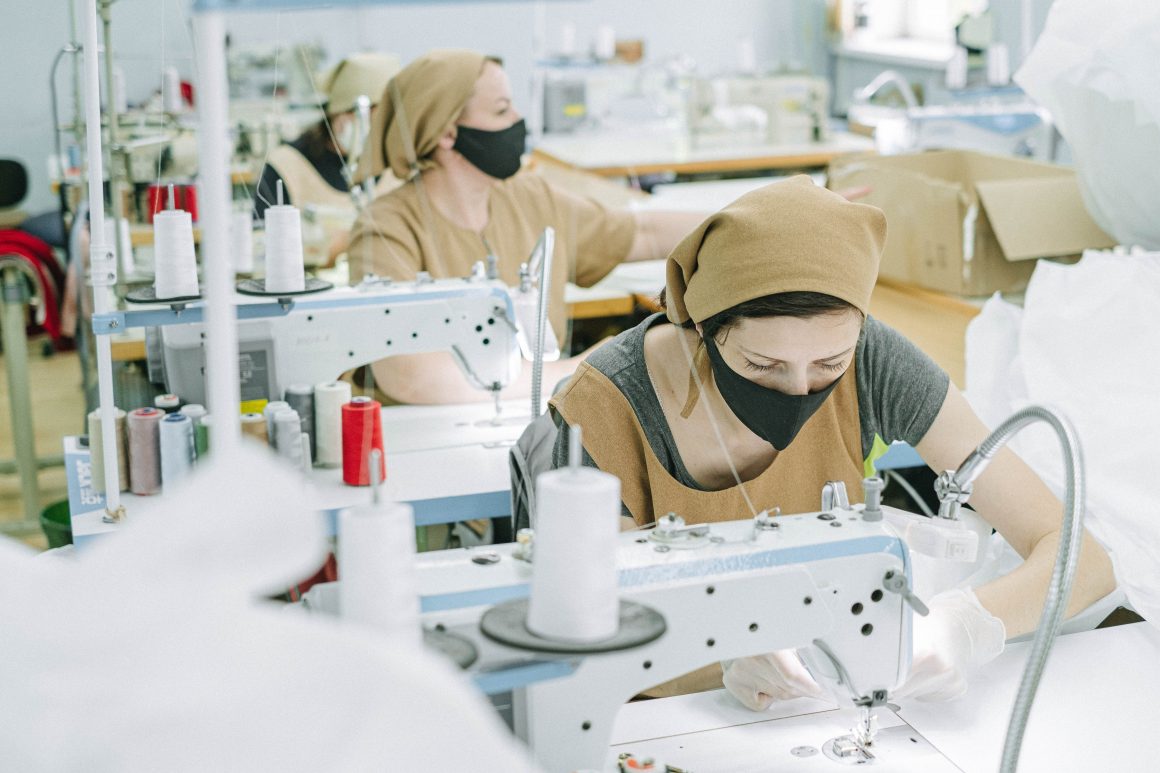
Sustainable U: Fashion Revolution Week 2022
By Rachneet Randhawa, May 18 2022—
Have you ever really wondered who made your clothes? Most of us acknowledge the fact that some of the world’s most loved brands are culprits. But once we see an eco-friendly label slapped on a new product line of our favourite brand and touted as “sustainable” we, unfortunately, buy into the greenwashing and brush it off as we head towards the checkout line.
Fashion Revolution is an annual campaign that brings together the world’s activists to advocate for seven days of action. The origins of Fashion Revolution resulted from the disastrous Rana Plaza collapse in April of 2013 in which a garment complex housing multiple garment factories in Bangladesh collapsed on the workers, killing at least 1,134 people and injuring thousands with most of the victims being young women.
The Rana Plaza collapse is the fourth-largest industrial disaster in the world. The most unfortunate part is that up until at least a day before the incident, large cracks were discovered in the building’s structure. Although some shops on the lower floors were advised to immediately close, the cracks were largely ignored by the factory owners on the upper floors in the assembly areas. The next day, thousands of workers amidst their regular shifts returned to the garment factories in their designated areas only to find that hours later the building collapsed.
And so, from that tragic event came Fashion Revolution week in which the lives lost are remembered, and advocating for safer and more secure working conditions for workers and that no one should ever have to die for fast fashion in particular. In our globalized era, no longer should we consider countries in the Global South as our dumping ground for outsourcing cheap labour. We have to remind ourselves that we’re all connected across the world in the supply chain from mock-up design to purchase by your customer.
The Rana Plaza incident ignited the Fashion Revolution movement whose goal is to advocate for a global fashion industry that restores the values of both human rights and environmentalism over petty profits and growth. I’m sure you’ve heard of big brand names such as Nike being called out for their unethical labour practices. Thankfully, companies are starting to respond to how shoppers these days are choosing to vote with their dollars. For example, some of the most popular brands in the world like ASOS, Levis and H&M are becoming more transparent by publishing their supplier lists. If it wasn’t for Fashion Revolution, this never would have happened.
There are a handful of key goals of the movement or the so-called Fashion Revolution manifesto as a way to combat fast fashion. These include ending human and environmental exploitation in the global fashion industry; safe and dignified working conditions and living wages for all people in the inclusive supply chain; a bigger and stronger labour movement, among other key goals.
But again, when adopting sustainable practices there is not a single solution. Change needs to happen in the areas of culture, industry and policy but especially with you — the conscious consumer.
You need to be the change you wish to see in the world. Next time you go on a shopping spree simply make the connection between the clothes you wear and the hands they come from. Doing a simple search will suffice and make you ask yourself — who made my clothes? By being proactive as a shopper and doing just a little bit of research, you will feel less guilty as a consumer about your purchasing habits. You have the power to make positive changes based on the companies and brands you choose to support.
Being empowered as a consumer of fashion is then both equally celebrated and scrutinized for industry practices encouraging change in both the average shopper and by holding big-name retail brands and companies accountable. What we appreciate about the Fashion Revolution is that it doesn’t play the shame and blame game. It’s about educating the public on creating a more ethical, sustainable and transparent future for fashion.
Every year, Fashion Revolution publishes a Transparency Index which rates 250 of the world’s largest global fashion brands and retailers based on the supply chain, including disclosing facts on human rights and environmental responsibility which I recommend taking a quick browse through. Who knows — the brands you adore and have been wearing from way back when may not be as sustainable as you’d think. So, in reflection of Fashion Revolution this year, I ask that you consider the ultimate question: Who made my clothes?
